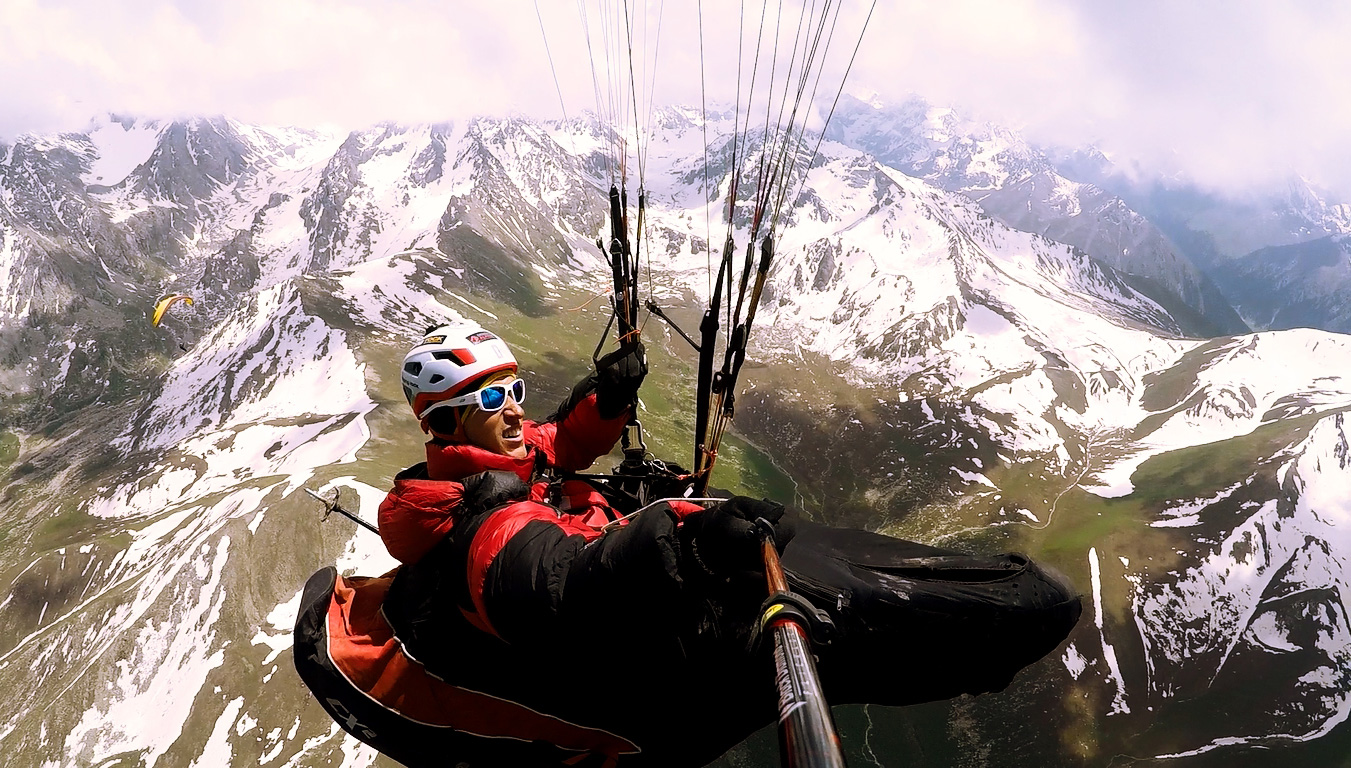
One way along the Silk Road: Peak to peak, modern explorers on skis
Last February, two friends set out from their home in the Czech Republic on a grand adventure: 18,000 miles and dozens of snow-capped peaks using only their own power — and sure willpower — to scale and ski down them all.
Karel Svoboda and Martin Štourač have taken similar road trips before. But this one was going to be longer and more ambitious than anything they’d ever dreamed up. Their plan? An eight-month journey following the Silk Road from the Balkans to the Himalayas, testing their extreme-mountaineering and first-descent skills in little-explored regions of Montenegro, eastern Turkey, Iran, Kyrgyzstan and Afghanistan.
The duo, or Beton Ski Team, would receive no mechanical or human assistance: no lifts, no helicopters and no high-altitude porters. Their backcountry skis are outfitted with a specialized binding with one mode for skiing and a second mode (with a free heel) for walking, as well as skins that give the bottom of their skis traction to climb.
Reaching Kazakhstan late last month, Svoboda and Štourač have already had their fair share of successes and unexpected adventures. Along the way, they’ve used Lumia 830 and 930 phones, and OneDrive and OneNote to record and help share their journey.

In southeastern Turkey they reached beautiful peaks, including one the locals like to call “heaven and hell.”
“It’s very rugged. It looks like Dolomites in the Alps with steep rock walls,” explained Svoboda. “We camped with our tent at the bottom of the valley to be able to approach the surrounding peaks. At nearly 60 degrees, it was steepest we’ve skied down. There was a lot of snow. You’d climb up and fall back on your head, or something would fall on you. When you made it down, it was a great feeling. You wanted to do it again.”
In addition to being longer and more ambitious, Svoboda said this trip has also been more reliant on technology.
“We knew we’d be on the road a long time and wanted to keep in touch with friends and family. From the beginning, it was clear we’d need more technology for this trip. Also, there wasn’t much time for prep before we left. The technology allowed us to prepare on the road.”
When they first set out, the pair hadn’t anticipated being able to visit Afghanistan, but decided to give it a try after getting tips from other travelers along the way.

Afghanistan was also challenging to plan for due to a lack of information about the peaks online, so the mountaineers found some other Czech climbers who had recently done the ascent and contacted them via Skype. “After having some discussions with them, we decided to go there,” Svoboda said.
Sometimes, they didn’t reach their peak, opting to be safe instead. Such was the case when they attempted to scale Noshaq, which at 24,580 feet is Afghanistan’s highest peak. “The conditions were bad. The weather was wet, and we were the only people there. The avalanche danger was too high. We had to decide to come down. The highest point we reached was about 20,000 feet,” Svoboda said. “We were quite happy nothing happened on the way down.”
They had other adventures on the way from Afghanistan, too, getting their car stuck in a river in Tajikistan while traversing the country’s highest road, a mountain pass clocking in at a dizzying 13,000 feet. They were stuck there, trying to dig the car out, for two days.
“It was a lot of work and we were quite afraid,” Svoboda remembered. “Not only worried about getting the car out of the water, but we only had two days remaining on our visas. It was quite stressful.”

Eventually, they walked to a nearby village and found some additional hands to help them lift and carry the car out.
Ironically, they’d recently retrieved the same vehicle a few weeks earlier, after having to ditch it at the Iranian border because they didn’t have the proper papers. As in Afghanistan, the duo persevered, putting what they could carry, including their skis, on their backs, and taking the taxi.
The car, said Svoboda, has earned the right as a veritable third member of their team.
Along the way, in addition to skiing down, Štourač paraglided from atop some of the Tian Shan Mountains in Kyrgyzstan. He used his phone as a GPS while in flight.

Svoboda said they used the OneNote app to store and save vital information about the journey along the way. “We have it synced with our smartphones,” he explained. “When we are in the field, we can take a look. It sounds basic, but it has been a big help for us, not to have to carry all of the information with us, to have the information in our hands all of the time.”
They also used OneDrive to store and share their photos and videos. “The photos from the Lumia phones have been such high quality, and OneDrive is a great help to keep them organized,” he added.
Later this month, the pair plans to summit Nepal’s Manaslu, the world’s eighth-highest mountain at 26,781 feet. By ending their trip here, they also hope to raise awareness — and funds — for victims of last spring’s devastating earthquake.
Svoboda and Štourač aim to return home to the Czech Republic in October. Svoboda, who recently passed the bar exam, will be looking for a job as a lawyer. Štourač will return to a career in construction and a different kind of climbing — high between the walls of unfinished buildings.
Follow the Beton Ski Team on Instagram, Facebook and Twitter.
Images courtesy of Beton Ski Team














